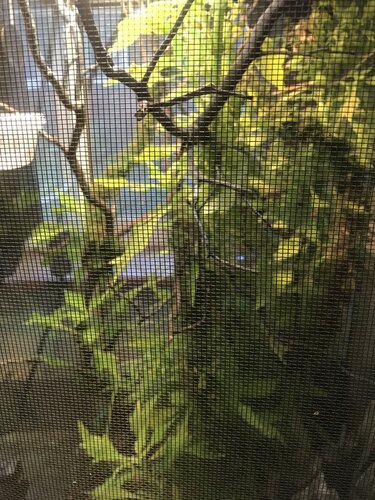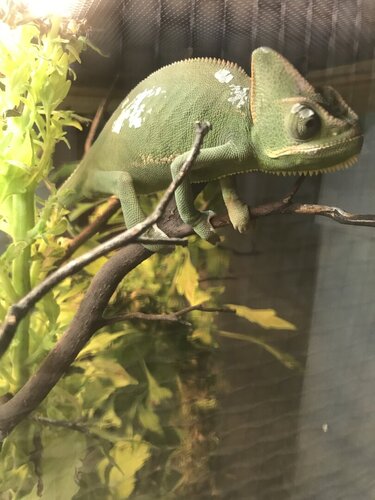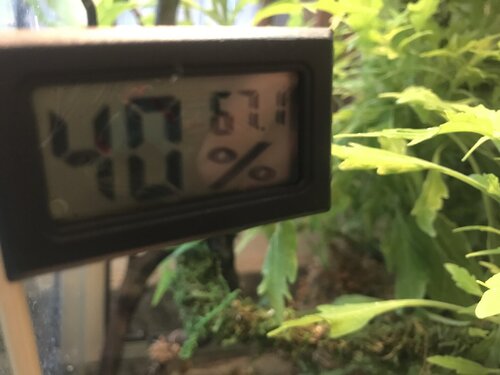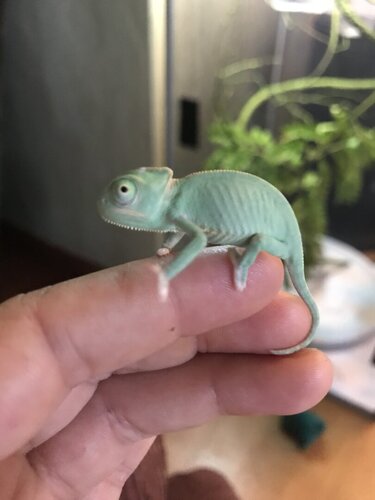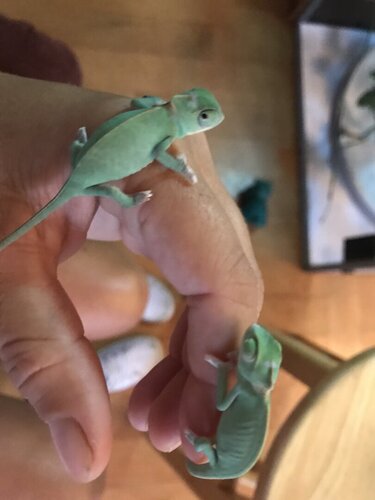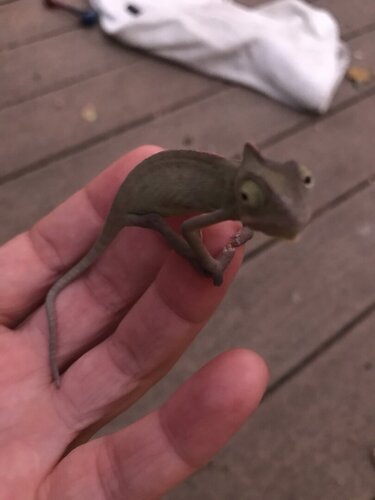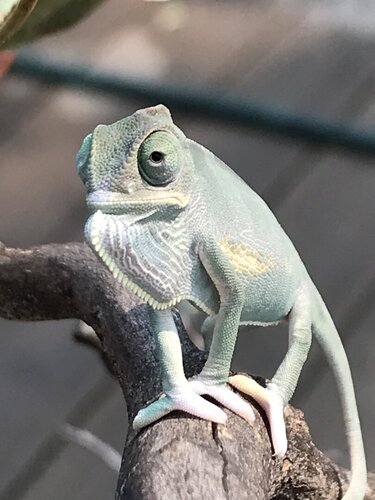RobinB
Member
Normally (past 3-4) sheds, Priscilla has a clean shed and within a quick 24 hours is as good as new. This past week she shed and now its been about 5 days with these patches of "stuck shed"?
Here I posted a pic of her humidity which is around 35-40% during the day.
The temperature gauge reads in the high sixties, but it's at the very coolest point and the first thing one early morning before sun and lights etc.
Priscilla eats a variety of bugs and every day I dust with calcium and daily multivite as well as twice per month a d3 calcium supplement.
She has lights in the day: UVB, day heat, and at night ceramic bulb for heat.
She has a drip/mister and live - (nonpoisonous) plants as well as manzanita branches for climbing and basking.
She has a screen house that she is just about grown into... going to be upgraded to a 4x2x2 arboreal reptibreeze tomorrow when it arrives.
So the question is am I missing anything? Should I just chill and give it a few more days or are there fixes for my sweet Priscilla and her 'flaky skin'.
Please feel free to let me know your experience and if you have any constructive feedback.
Thanks from my Chameleon family to yours <3
Here I posted a pic of her humidity which is around 35-40% during the day.
The temperature gauge reads in the high sixties, but it's at the very coolest point and the first thing one early morning before sun and lights etc.
Priscilla eats a variety of bugs and every day I dust with calcium and daily multivite as well as twice per month a d3 calcium supplement.
She has lights in the day: UVB, day heat, and at night ceramic bulb for heat.
She has a drip/mister and live - (nonpoisonous) plants as well as manzanita branches for climbing and basking.
She has a screen house that she is just about grown into... going to be upgraded to a 4x2x2 arboreal reptibreeze tomorrow when it arrives.
So the question is am I missing anything? Should I just chill and give it a few more days or are there fixes for my sweet Priscilla and her 'flaky skin'.
Please feel free to let me know your experience and if you have any constructive feedback.
Thanks from my Chameleon family to yours <3

